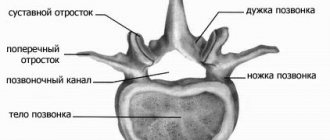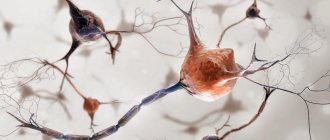Throughout life, a person needs to adapt to new conditions. Types of adaptation are divided into biological, sociological and psychological. Adaptive abilities are constantly in demand. Since it is often necessary to make new decisions, move to different communities and organizations where it is necessary to maintain established routines. Biological changes take place accordingly. However, this process sometimes takes entire generations for part of the population to adapt to specific conditions.
In psychology there is the concept of an adaptation barrier. It denotes a kind of boundary, beyond which the individual’s adaptation to changes will no longer remain normal.
Articles on the topic
- Poor parenting and its impact on human behavior 08/24/2021
- What does a femme fatale mean and how does she differ from a bitch 06.24.2021
- Types of women in psychology 06/24/2021
- Hysterical personality type of a woman: features of communication 06.16.2021
The properties of this barrier largely depend on the person himself, his biological parameters and characteristics, constitutional typology of personality, various social factors, personal properties, type of self-esteem, will or value system. They also determine a person’s adaptive capabilities.
Types of adaptation and their characteristics
A person must adapt constantly. The baby needs to get used to the features of the environment and undergo physical adaptation, learning to crawl, walk, interact with objects and speak. At an older age, it is necessary to adapt to society.
It is especially important for a child to acquire his first social skills at school. In preschool age, he gains disciplinary experience, learns new rules of behavior, and learns to bear responsibility for the quality of the work performed. Throughout life, a person constantly becomes part of something new, repeating the processes of various types of adaptation again and again. The ability to adapt socially gives a person the opportunity to acquire new knowledge. He begins to interact with other people.
Human adaptation is referred to as “learning.” It has several components:
- reactive - a person reacts to external factors, gets used to something;
- Operant is a method of trial and error, observation and formation of reactions, or processes of slow adaptation to the conditions of the surrounding world;
- cognitive - refers to the observation of connections between situations and their assessment based on previous experience.
That is why organizations often have a special person whose task is to adapt newly hired employees. This is due to the fact that all organizations have their own tasks, goals and deadlines that must be completed by the hands of valuable employees. This is complicated by the fact that they may leave their post. Therefore, the hired person must be quickly brought up to date. Tell him about the basic rules and specifics of the organization. All this allows you to speed up the process of adaptation to a new workplace.
Tropical type of adaptability
At these latitudes there is high solar activity, tropical storms, etc. The environment plays an important role in the formation of adaptive types of humans.
This type includes people living in warm and humid areas. They differ in the following characteristics: elongated body shape, dolichomorphy - long arms and legs, combined with a short body. Relatively large body surface. There are many sweat glands, which contributes to intense sweat production.
The metabolic rate is average, the synthesis of endogenous fat and cholesterol from the liver is low, which affects human health in these areas. There is a reduced content of minerals in the bones. The phenomenon of low protein is common, and endemic diseases associated with increased or decreased levels of one or another chemical substance in the habitat area have also found their place.
All these signs were acquired due to exposure to a hot climate with high humidity.
Adaptation in pedagogy
Trial and error is a major part of the adaptation process throughout the entire period of schooling. It is expressed in the selection of ways to solve a problem and weed out wrong solutions. An example is a process where, over the course of several years, a child needs to acquire various knowledge in order to subsequently use the information received in exams and move on to the next stage of education.
It is worth considering that this type of adaptation implies the ability to move from one area of activity to another. For example, from kindergarten to school, then to college and university. If a person does not meet the required behavioral characteristics, his adaptation is considered unsuccessful.
Arid type of adaptability
This type includes people living in desert areas. These latitudes are characterized by rare precipitation and a hot climate.
Features of the physique of an arid adaptive type of person: linear physique, flat chest, poorly developed muscles, small fat component, slow metabolic process in the body. Less sensitive to changes in environmental temperature.
In organizations
In conditions of constant circulation of personnel, adaptation begins to become especially important. The main way to adapt to new conditions in this case is observation and reasoning. This means that a beginner will need to take a course of lectures and seminars in the chosen direction.
Adaptation also involves the work of special people. They should help the new employee through this process through both one-on-one conversations and all-hands meetings. The assignment of mentors is also practiced. On the practical side, they help bring a person up to date so that he can understand all the intricacies of the profession. In addition, getting to know the team is required. At the same time, it is possible to complete gradually more complex tasks, which should prepare the new employee for real work.
One of the most popular ways to adapt and unite a team is to hold meetings and trainings. Team members try on each other's roles, which allows for greater mutual understanding and increased work efficiency.
Alpine adaptive type
This type of latitude is characterized by low average annual temperatures and lack of oxygen. People of this type are distinguished by a massive skeleton, a cylindrical chest, and a high content of hemoglobin and red blood cells in the blood. The thyroid gland is less developed. Metabolism is intense compared to the types described above.
The intensity of development is low, as is growth, but life expectancy is significantly higher than in other regions.
Does not apply to types of adaptation
adaptation cannot be attributed to the probationary period if a mentor was not assigned to the employee. After all, the person was not introduced to organizational affairs. Without clear examples and attention, he simply does not have enough time to adapt to new conditions.
Threats and coercion directed at new students or employees cannot be classified as types of adaptation.
Especially if they are used to indicate their own or someone else’s authority. This does not improve performance, but only worsens overall results.
Continental type of adaptability
The population of this zone is characterized by the following characteristics: a flat chest, a tendency to be overweight, and a lower than normal content of substances of mineral origin in the skeleton.
The chest type of body type is common, which is characterized by weak muscle development, stooping, and a hollow in the abdominal area. The abdominal type has also become widespread, the distinctive features of which are: a conical chest, a convex belly, and a regular (wavy) or stooped back.
In the taiga zone, the signs are similar, but the distinguishing feature is the miniature physique.
Arctic type
The adaptive type of man was formed as a result of the influence of cold and food, mainly of animal origin. The population of this type is distinguished by powerful muscles, a massive skeleton, a fat complex, the chest is large and has the shape of a cylinder.
The hemoglobin level in the Arctic adaptive type of person is high compared to other types. The bone marrow reaches large sizes, the bones are rich in minerals, cholesterol and protein in the blood of such people are at a high level. At the same time, immunity is average.
Moderate type of adaptability
There is a relationship between adaptive human types and races, since the formation of different human types determines their distribution throughout the world.
The temperate zone type is the most common on the planet. In terms of distinctive features and climate, it occupies an intermediate position between two types: arctic and tropical.
The moderate type is widespread, combining many different factors of all latitudes to which the body must adapt.
How to write a term paper on speech therapy
07.09.2010 231169
These guidelines are compiled to help students gain an understanding of the content and structure of coursework in speech therapy.
Logopedia of pedagogical science that studies anomalies of speech development with normal hearing, explores the manifestations, nature and mechanisms of speech disorders, develops the scientific basis for overcoming and preventing them means of special training and education.
The subject of speech therapy as a science is speech disorders and the process of training and education of persons with speech disorders.
The object of study is a person suffering from a speech disorder.
The main task of speech therapy as a science is the study, prevention and elimination of various types of speech disorders.
Coursework in speech therapy is a student's scientific and experimental research. This type of educational activity, provided for by the educational and professional program and curriculum, contributes to the acquisition of skills in working with literature, analyzing and summarizing literary sources in order to determine the range of insufficiently studied problems, determining the content and methods of experimental research, processing skills and qualitative analysis of the results obtained. The need to complete coursework in speech therapy is due to the updating of knowledge concerning the content, organization, principles, methods and techniques of speech therapy work.
As a rule, during their studies, students must write two term papers - theoretical and practical.
The first course work should be devoted to the analysis and synthesis of general and specialized literature on the chosen topic. Based on this analysis, it is necessary to justify and develop a method of ascertaining (diagnostic) experiment.
In the second course work, it is necessary to provide an analysis of the results obtained during the ascertaining experiment, as well as determine the directions and content of speech therapy work, and select adequate methods and techniques of correction.
So, let’s present the general requirements for the content and design of coursework in speech therapy.
The initial and most important stage of working on a course project is the choice of a topic, which is either proposed by the supervisor or chosen by the student independently from a list of topics that are consistent with the areas of scientific research of the department.
Each topic can be modified, considered in different aspects, but taking into account a theoretical and practical approach. Having chosen a topic, the student needs to think through in detail its specific content, areas of work, practical material, etc., which should be reflected both in the formulation of the topic and in the further construction of the study. It should be recalled that the chosen topic may not only have a purely theoretical orientation, for example: “Dysarthria. Characteristics of the defect”, “Classification of dysgraphia”, but also take into account the practical significance of the problem under consideration, for example: “Speech therapy work on speech correction for dysarthria”. It should also be taken into account that when formulating a topic, excessive detail should be avoided, for example: “Formation of prosodic components of speech in preschoolers of the sixth year of life attending a preschool institution for children with severe speech impairments.”
The course work includes such mandatory parts as: introduction, three chapters, conclusion, bibliography and appendix.
The text of the term paper begins with the title page . An example of its design can be seen here.
Then the content of the work is given, in which the names of chapters, paragraphs, and sections are formulated in strict accordance with the content of the thesis. An example of its design can be seen here.
In the text, each subsequent chapter and paragraph begins on a new page. At the end of each chapter, the materials are summarized and conclusions are formulated.
The introduction reveals the relevance of the problem under consideration in general and the topic being studied in particular; the problem, subject, object, and purpose of the study are defined. In accordance with the goal and hypothesis, objectives and a set of research methods aimed at achieving the objectives must be defined.
The relevance of the topic lies in reflecting the current level of pedagogical science and practice, meeting the requirements of novelty and usefulness.
When defining the research problem, it is important to indicate what practical tasks it will help to implement in training and educating people with speech pathology.
The object of research is understood as certain aspects of pedagogical reality, perceived through a system of theoretical and practical knowledge. The ultimate goal of any research is to improve this object.
The subject of research is some part, property, element of an object, i.e. the subject of research always indicates a specific aspect of the object that is to be studied and about which the researcher wants to gain new knowledge. An object is a part of an object.
You can give an example of the formulation of the object, subject and problem of research:
– The object of the study is the speech activity of preschool children with phonetic-phonemic speech disorders.
– The subject of the study is the features of intonation speech of children with phonetic-phonemic speech disorders.
– The research problem is to determine effective directions for speech therapy work on the formation of intonation expressiveness of speech in the system of correctional intervention.
The purpose of the study contributes to the specification of the object being studied. The goal of any research is to solve a specific problem. The goal is specified in tasks taking into account the subject of research.
The research objectives are formulated in a certain sequence, which determines the logic of the research. The research objectives are set on the basis of a theoretical analysis of the problem and an assessment of the state of its solution in practice.
The first chapter is an analysis of literary sources, which examines the state of this problem in historical and modern aspects, and presents the most important theoretical principles that formed the basis of the study.
When writing the first chapter, you should pay attention to the fact that the text of the course work must be written in a scientific style. When presenting scientific material, it is necessary to comply with the following requirements:
– Specificity – a review of only those sources that are necessary to disclose only a given topic or solve only a given problem;
– Clarity – which is characterized by semantic coherence and integrity of individual parts of the text;
– Logicality – which provides for a certain structure of presentation of the material;
– Reasoning – evidence of thoughts (why this and not otherwise);
– Precision of wording, excluding ambiguous interpretation of the authors’ statements.
A literary review of the state of the problem being studied should not be reduced to a consistent presentation of literary sources. It should present a generalized description of the literature: highlight the main directions (currents, concepts, points of view), analyze in detail and evaluate the most fundamental works of representatives of these directions.
When writing a work, the student must correctly use literary materials, make references to the authors and sources from which the results of scientific research are borrowed. Failure to provide required references will reduce your coursework grade.
As a rule, in coursework on speech therapy, references to literary sources are formatted as follows: the number of the cited source in the general list of references is placed in square brackets. For example: General speech underdevelopment is a speech pathology in which there is a persistent lag in the formation of all components of the language system: phonetics, vocabulary and grammar [17].
When using quotations, in square brackets, in addition to indicating the source number, the page number from which this excerpt is taken is indicated, for example: Speech rhythm is based on a physiological and intellectual basis, since, firstly, it is directly related to the rhythm of breathing. Secondly, being an element that performs a communicative function, “correlates with meaning, i.e. controlled intellectually” [23, P.40].
However, course work should not be of a purely abstract nature, so you should not abuse the unreasonable abundance of citations. Quoting should be logically justified, convincing and used only when really necessary.
In the second chapter , devoted to experimental research, the organization should be described and the program of the ascertaining experiment should be presented. The survey methodology, as a rule, consists of a description of several series of tasks, with detailed instructions, visual and lexical material, the procedure for completing tasks by experiment participants, and scoring criteria. This chapter also provides a qualitative and quantitative analysis of the results obtained.
When analyzing the results of an experiment, it is necessary to use a scoring system. Examples of various criteria for quantitative and qualitative assessment are presented in the following works:
– Glukhov V.P. Formation of coherent speech in preschool children with general speech underdevelopment. - M.: Arkti, 2002. - 144 p.
– Fotekova T.A. Test methodology for diagnosing oral speech of primary schoolchildren. - M.: Arkti, 2000. - 56 p.
– Levchenko I.Yu. Pathopsychology: Theory and practice. - M.: Academy, 2000. - 232 p.
In order to visually present the results obtained during the experimental study, it is recommended to use tables, graphs, diagrams, etc. Histograms can be used in a variety of ways - columnar, cylindrical, planar, volumetric, etc. An example of the design of tables, figures, and histograms can be found here.
The third chapter provides a rationale for the proposed methods and techniques and reveals the content of the main stages of correctional work.
The conclusion contains a summary of the material presented and the main conclusions formulated by the author.
The bibliography must contain at least 25 sources. The list includes bibliographic information about the sources used in preparing the work. An example of its design can be seen here.
In the application you can present bulky tables or illustrations, examination protocols, observation records, products of activity (drawings, written works of children), notes from speech therapy classes, etc.
The volume of one course work must be at least 30 pages of typewritten text.
In general, coursework in speech therapy is the basis for a future thesis, in which the study of the begun problem can be continued, but from the standpoint of a different approach or a comparative analysis of the disorders being studied in different age categories of people with different types of speech disorders.
The content and format of theses in speech therapy can be found here.
Literature:
1. How to write a term paper on speech therapy: Methodological recommendations. Educational and methodological manual / Comp. Artemova E.E., Tishina L.A. / Ed. Orlova O.S. – M.: MGOPU, 2008. – 35 p.
2. Research work of students in the system of higher professional pedagogical education (specialty 031800 - Speech therapy). Methodological recommendations for completing the thesis / Compiled by. L.V. Lopatina, V.I. Lipakova, G.G. Golubeva. - St. Petersburg: Publishing house of the Russian State Pedagogical University named after. A. I. Herzen, 2002. - 140 p.
Impact of climate
An important factor is temperature and its effect on the body. Population densities around the world vary depending on air temperature. Due to thermoregulation of the body, a person adapts to seasonal temperature changes. Therefore, the smaller the difference in seasonal temperature changes, the more favorable the living conditions and the population growth.
Solar activity affects a person’s performance and health; orientation in space also depends on sunlight and increases brain activity. Due to a lack of vitamin D, diseases such as rickets develop.
Adaptive types of humans in different climatic zones differ in skin color and muscles.
Atmospheric pressure also affects physiological parameters. In the north of Eurasia, Canada, and Alaska there is a cold zone. The growing season lasts no more than two months. Low temperatures prevent active farming.
In the latitudes of Eurasia there is a cool zone, as well as in the north and south of America, in the Andes. The warm regions of this belt are distinguished by the development of agriculture.
On the territory of Europe there is a temperate zone, not including the southern islands, the Russian Plain, Kazakhstan, Southern Siberia and the East, Mongolia, Tibet, Northeast China, the southern part of Canada, and the northern regions of the USA.
The warm zone occupies the Eurasian Mediterranean, southern China, most of the USA and Mexico, Chile and Argentina, southern Africa and Australia.
The hot-type belt occupies the predominant area of Africa, South America, South Asia, the Arabian Peninsula, and Central America. Also, agroclimatic zoning of the world is carried out depending on the degree of moisture.









